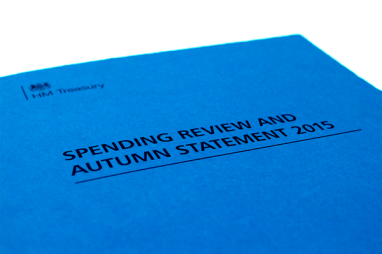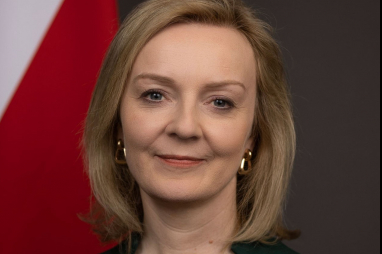- 200 Release Date - nike gold air chukka moc high school - SBD - nike gold air yeezy glow in the dark sneakers boys Rattan Obsidian CZ4149
- air jordan 6 carmine 2021 release date
- IetpShops , adidas Running Spring/Summer 2010 Preview Oscillate & Regulate , Tênis Adidas Originals Nmdr1 Preto Branco
- The adidas CRAZY BYW Gets a Luxury Makeover From Bristol Studio - StclaircomoShops - adidas campus adv grey six
- IetpShops , clima adidas performance adizero prime green screen , clima adidas performance adizero prime green screen 'Home' and 'Away'
- Air Jordan 1 Mid Bred 554724 074 2020 Release Date 4
- best nike basketball shoes
- Miles Morales Shameik Moore Air Jordan 1 Spider Verse
- air jordan xxxv cq4227 004
- Air Jordan 3 Rust Pink CK9246 600
- Home
- News and analysis
- Info hubs
- Events
- Video
- Case Studies
- About us
- Magazine
- Advertising
Produced for the industry by the Association for Consultancy and Engineering
Comment
An Autumn Statement with a difference

As the chancellor of the exchequer Philip Hammond prepares for November’s Autumn Statement, we should expect a less gimmicks and more substance approach than his predecessor, says Julian Francis.
It’s that time of the year when the country begins to look to the chancellor to set out governmental priorities and spending commitments in the Autumn Statement. So far so good, but this year’s statement looks like it may be a bit different from the style that we have been used to in previous years.
Although Philip Hammond has confirmed he will be delivering the Autumn Statement as planned on 23 November, the chancellor is said to have told colleagues that he wants to move away from gimmicks and micromanagement and return the Autumn Statement to be focused on fiscal forecasting.
"Philip Hammond is siad to have told colleagues that he wants to move away from gimmicks and micromanagement and return the Autumn Statement to be focused on fiscal forecasting."
This approach was foreshadowed at the Treasury select committee meeting on 20 October in which the chancellor told the committee that he plans to downgrade the Autumn Statement, or rather take it back to its roots.
The Autumn Statement was originally part of a plan by which government would give two economic updates a year, enshrined in legislation by Labour during the mid-1970s, with Denis Healey giving the first such statement in 1976.
Healey’s original statement included an announcement of his spending plans. When Ken Clarke became chancellor the best part of 20 years later, he put the spending and tax announcements back together again in the Budget, moved it to the autumn, and introduced a brief summer statement focused on forecasts.
Clarke believed that it was sensible for tax and spending plans to march in step together, but Gordon Brown, who succeeded him, wanted a second annual bite of the announcement cherry – and so went back to a spring budget and re-introduced the Autumn Statement in the form of a Pre-Budget Report.
Alistair Darling had originally planned to scale back the Autumn Statement when he became chancellor but he found he needed both the Budget and the Autumn Statement to cope with the fallout of the financial crisis. George Osborne decided to continue with Gordon Brown’s approach and to treat the statement as a way of maximising his political impact, using it in effect as a second Budget opportunity each year in which to gain some vantage, or attempt to.
Hammond evidently prefers a more Clarke-like substance over spin-focused style, and wants in future years to move closer to the original vision of the statement. This has the advantage in that it will avoid the political fallout from policy announcements that then fail to live up to their billing. Remember the pasty tax anyone?
What this means is that the industry must prepare itself for a very different statement this year that will focus more on the dry economic data of how the government is meeting the objectives of the budget than a Christmas giveaway for the lucky few.
The last two decades have seen a proliferation of policy announcements in budgets that have led to extremely long and complicated finance bills. This is because we were getting in effect two budgets a year and this made finical policy very opaque and hard to follow.
"The chancellor is taking the politics out of the budget process to the degree that this is possible. Hammond believes that the Treasury has become too big and involved in too much policy making in Whitehall."
This chancellor is making the process much simpler and to some respect is taking the politics out of the budget process to the degree that this is possible. This fits in line with Hammond’s belief that the Treasury has become too big and involved in too much policy making in Whitehall and so is a visible demonstration of the new priorities of the May government.
Out will go the gimmicks and the micromanagement of the past and in will come solid, stable decision making that will be focused on practical results over political opportunism. At least that is the plan according to Downing Street. Make no mistake this is a gamble as the Autumn Statement is the government’s one big pre-Christmas opportunity to take the economic initiative and this was why it was so loved by Brown and Osborne.
Given the current economic situation facing the country, Hammond may need such a chance again in the coming years. With the forthcoming Brexit negotiations, the uncertainty about what will come out of them and the need to react quickly, a platform to seize the initiative and reassure markets and industries may well be seen as vital to the survival of the government. What looks at first glance like the stripping-away of a gimmick may be seen in retrospect as the casting-away of an opportunity.
Although this approach may well disappoint some in our industry, we should welcome it as it fits with our request for more certainty and less politics in the development of infrastructure policy. This new fiscal approach combined with the NIC assessments and the industrial strategy have the potential to create a stable policy platform that will enable our industry to invest with the confidence it needs.
Julian Francis is director of policy and external affairs at the Association for Consultancy and Engineering.





